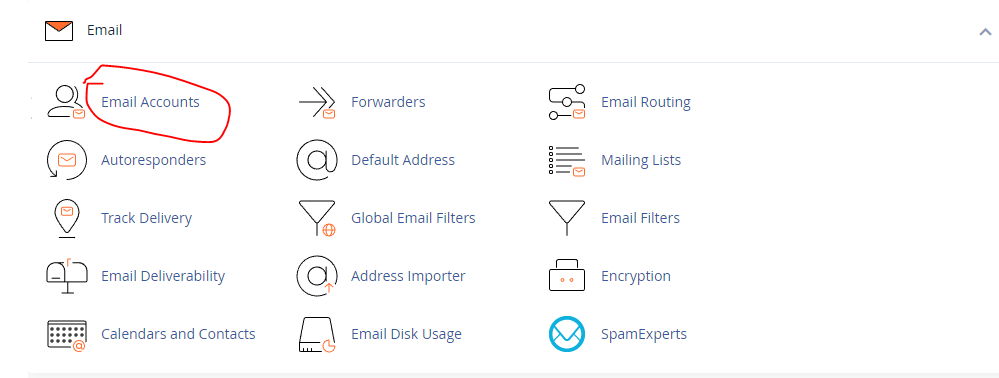Configure your email client
This guide walks you through and shows how to obtain all the details you'll need to set-up email accounts on any email clients. This article assumes you using email accounts created within your cPanel hosting.
We support both POP and IMAP email accounts - these are the most common protocols for receiving email. We only support secure connections (SSL/STARTTLS).
Before we start, lets take a look at what POP, IMAP and SMTP are.
IMAP (Internet Mail Access Protocol) is better if you use multiple devices - each device syncs with the mail server, so you see the same emails on all devices. Email is stored on the server, with a copy synced to each device. This makes it much easier if you need to change your device - you simply connect the new email client up to the server and it'll automatically sync to the new client.
POP3 (Post Office Protocol) works by a client connecting to the server, retrieving email, and then (normally*) requesting the email be deleted from the server, there is no 'sync' as with IMAP. (* whether email gets deleted from the server or not is controlled by the email client requesting it - if the client doesn't request deletion the email will stay on the server, no matter what happens to the email on the client (read/unread/deleted). Should your client not request deletion, when a new client is connected all the previous email will be delivered and appear unread. That email will also be taking up disk space in your account.)
We use SMTP (Simple Mail Transport Protocol) for sending email - is the standard protocol used for sending emails across the Internet. It functions as a set of rules that dictate how email messages are transmitted from one server to another, ensuring that emails are properly delivered to their intended recipients. SMTP operates by establishing a connection between the sender's and recipient's email servers, then transferring the message data. It's essential for outgoing email communication, handling tasks such as relaying and forwarding emails. Without SMTP, email as we know it wouldn't be possible.
Finding all the details you'll need
Your Email Address and Password
First and foremost you'll need your email address and password. You'll have set the password when you created the email account in cPanel.
If you can't remember it, your only option will be to change it.
Checking your Username and Password work
You can check that your username (email address) and password work easily by trying to login to webmail for your domain.
Incoming and Outgoing server details
cPanel > EMAIL > Email Accounts > click Manage > click Connect Devices
You'll need to log in to your accounts cPanel.
From within the EMAIL section click the Email Accounts icon.

Within the email account management screen, click the Connect Devices button next to the email account you'd like to setup. You'll then see the remaining details you'll need.
Incoming server (usually mail.yourdomain.co.uk)
Outgoing server (usually mail.yourdomain.co.uk)
The final detail is the SMTP port. Our servers, and most modern email clients are capable of using a newer encryption (called STARTTLS) and this is served by Port 587. If your email client is older and only supports SSL then you can use Port 465.
These are all the details you'll generally require to setup any email client.
